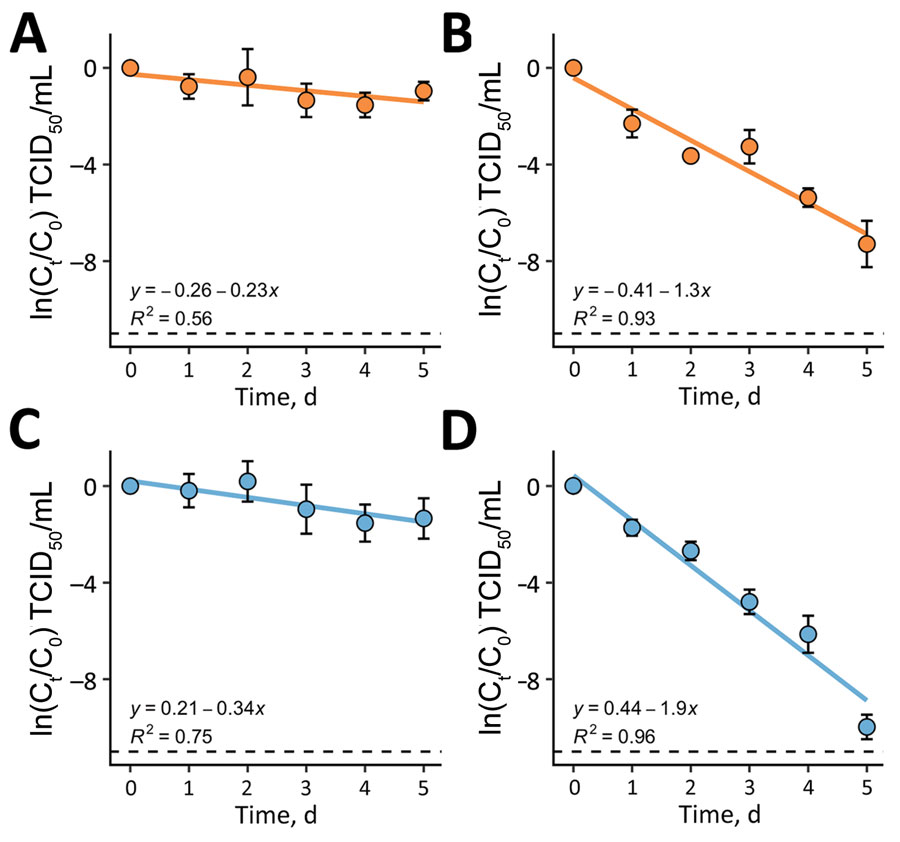Volume 29, Number 11—November 2023
Research
Environmental Persistence and Disinfection of Lassa Virus
Figure 2

Figure 2. First-order decay of Josiah and Sauerwald strains in water in a study of environmental persistence and disinfection of Lassa virus. A) Josiah strain in deionized water; B) Josiah strain in wastewater; C) Sauerwald strain in deionized water; D) Sauerwald strain in wastewater. Each plotted point represents the mean of 3 independent experimental replicates run concurrently, and the error bars show the standard deviation. Solid blue and orange lines indicate decay rates; dashed lines indicate the assay’s detection limits; hollow circles represent points below the detection limit that were not included in the regression analysis. The equation of the linear regression (y) and the R2 value are shown on the plots. All plotting, regressions, and statistical analyses were performed using R Studio 2022.07.2 (The R Foundation for Statistical Computing, https://www.r-project.org). C, initial concentration of infectious virus; Ct, concentration of infectious virus at time, t; TCID50, 50% tissue culture infectious dose.
1These first authors contributed equally to this article.